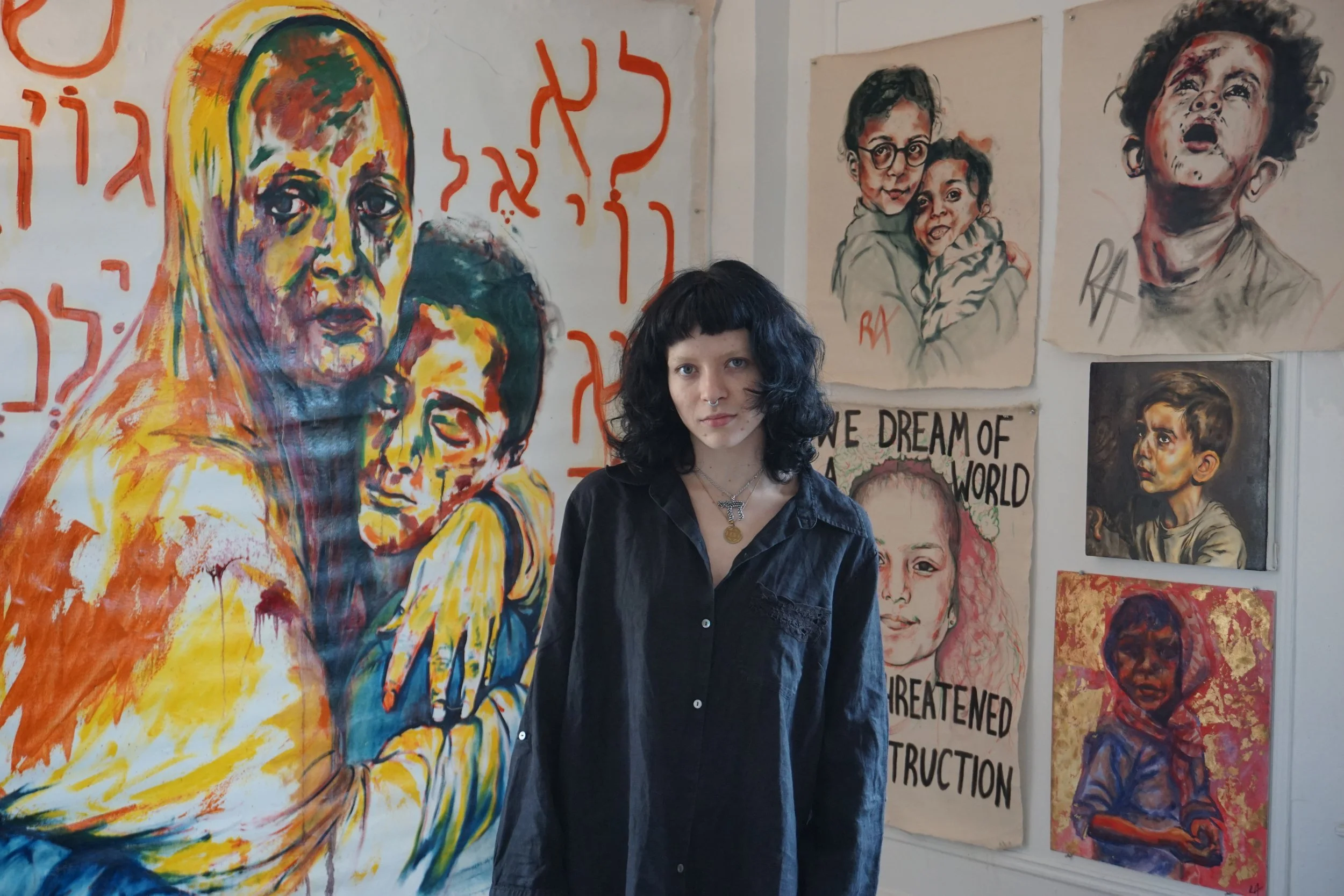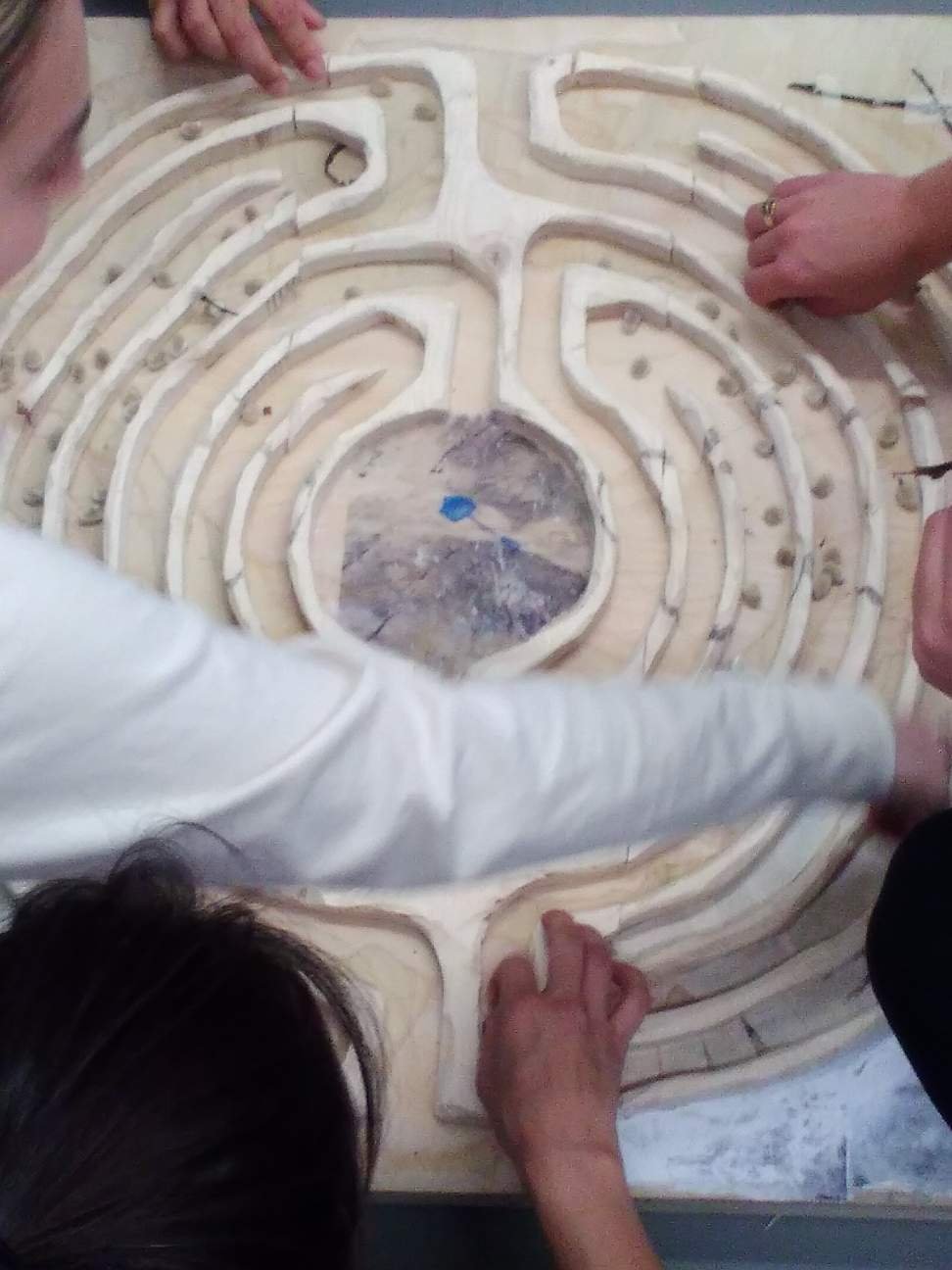Feature by Eve Rosenblum
Photos by Lauren Zhou
It was a perfect autumn evening, one of those nights where you forget all your worries in the crispness of the air and the yellow-orange of the leaves. On the patio of Hungarian, as I waited for Eleanor, I caught the eye of a little girl glaring at me and my chocolate cake. “It’s not fair Mama.” She said, “Why hasn’t our food come yet?” The Mom laughed her daughter off, explaining, you have to wait your turn. As I did my best not to start my cake before the girl’s arrived, I kept thinking about her skepticism. I had forgotten there was a world where I too, once, had not understood these rules.
20 minutes later Eleanor arrived, distinguishing herself from the chichi crowd of the Upper West with cropped bangs and black joggers. A senior, majoring in cognitive science, she transferred two years ago from Scripps College in Southern California, having started to go crazy from the lack of seasons and fog.
Fog, I learned, is big for Eleanor. She grew up admiring these misty weather systems roll through her family’s home in Northern California. A love of nature was also inculcated through the “weird progressive” lower school she went to. The day was largely spent playing outside, in Eleanor’s case, digging in the dirt.
She explained how it shaped her personal philosophy or lack thereof. For Eleanor, there was no need to question why we do things.
“When you’re just playing in the dirt all day, or building stuff with your hands or playing games or planting lettuce the meaning becomes so self evident. It's not even a question.”
Our disconnect from nature also blinds us from our position in a larger framework of relations, she explained. A more accurate and whole world view would involve non-human entities as well. “There's just so much we can learn from animals or even just properties of objects too, and their relationship to each other, in our relationship to them.”
She points to the table we’re sitting at. “This table is a table. It's useful because we can put things on it, but what else is going on with the table? What's this table’s specific history? What has it been through? What kind of psychic energy does it have? If we flip it around, could it be used as a weird pillow?” The more she learns about the brain in her readings, the more she thinks structuralism could be right. “It's not about the discrete items, but their relation to each other.”
But a structuralist understanding of the world has only drifted further from the modern consciousness, Eleanor argues. She cites the philosopher Byung-Chul Han. In his conception, under neoliberal capitalism comes a “pornographication” or flattening of existence. Everything is made accessible and visible. Mystery is sapped. Rituals disappear. This only serves to further isolate ourselves from others under the guise of individualism.
I asked Eleanor if she’s been able to protect herself from this experience. Away from her home she emphasized the impossibility. “I can't, and I'm sad. I experience a constant sense of alienation.” In New York she feels that the people, things, or animals around us are seen as valuable based on their usefulness to us. “It defeats the purpose of being alive. It's deeply dehumanizing and depressing” she said.
Children, however, intuitively connect to the world. Her mother used to tell her how while examining her Barbie doll, she discovered eyebrows. To rediscover this curiosity, adults need boredom. “Even now when I'm inconvenienced, obviously, my immediate reaction is annoyance, but then I usually feel grateful, because no, I don't want to be just completing one thing after the other, as quickly as humanly possible. The inconvenience kind of is the point.”
Art can be a practice of inconvenience. Alternating between photography and drawing, Eleanor’s work explores childhood through the younger person as either its subject or its view point. A pencil drawing shows a girl, tears streaming down her cheeks. Loosely sketched toys peak out from beside the toddler: a robot shrouded in darkness on the one side, a hanging bunny on the other. A similar girl appears in a photograph, with a worn out blanket held just before her face. Her mischievous smile and expressionless eyes captivates the viewer's gaze, recalling the confidence and shameless character of their younger self.
Other photographs depict visual curiosities. A hairless cat on an all-white background. An aquarium, with a string of sea moss reflecting at the surface of the tank, appearing to converge two opposite aquatic worlds for infinity. A colorful anemone, just visible beneath the shadow of the photographer, hair billowing behind them. A maze, three hands exploring its structure, and an older figure, leaning over them, pointing.
Looking at Eleanor’s work, I forget the focused vision I’ve learned in adulthood. As her photos delight in the curiosity of the younger person’s eye, her sketches demonstrate the different significance of childhood objects. A stuffed bunny might mean fear or comfort to a child, but rarely anything more than a price to an adult. Eleanor’s work provokes the possibility that a return, at least in feeling, is possible.
But Eleanor emphasizes her art is not for the greater good. On the contrary, art is a personal practice, a means of processing the world, that most of the time, she’s not aware of. “Like, oh my God, I have to do it. I just have to get to a point of being so uncomfortable with myself and pissed off that I just cave and make something.” The art-making itself is rarely fun. In fact, it’s usually a low. “In my opinion, you're gonna feel a little shaky, a little sweaty, a little depleted after, but satisfied. It’s like a good barf.”
Creating for an assignment, however, the process can go from hard to torturous. “When you're kind of in that middle range of being an artist, there's a lot of feeling like you need to prove yourself, or you're trying to make a statement. Art becomes a kind of discourse, rather than something a little bit more ambiguous or secretive or particular.” This is wrong, she thinks. Art, for her, is not an act of producing but a way of life. If others enjoy her work she would celebrate it, but that doesn’t motivate her to create. “That's not the point,” she said. “And I don’t think it could be the point.”
I asked Eleanor what the point was. She had talked at length about her disgruntlement with the lack of connection in modern society, so the fact that she pursued a solitary practice, such as art, surprised me. Art has taught her how to be alone, she explained. Ironically, this opens you up to deeper and more meaningful connections. Put yourself out there, society suggests. “You might be able to make more friendships, but they're probably not going to be the ones you really want.”
Through solitude, she has learned how to be with others: truly trying to understand them. “It takes humility and an ability to admit that you may be wrong, but it’s only going to pay off and lead to a more genuine connection.”
This vulnerability Eleanor described reminded me of the girl at the Hungarian sitting next to me only an hour ago, unafraid to look me in the eyes. This vision of connection was possible for our younger selves who acted without hesitancy. Through her pieces, Eleanor turns back time, leaving the rest of us to consider how we will too.
Reach out to Eleanor at ellie.ryann.f@gmail.com.












































